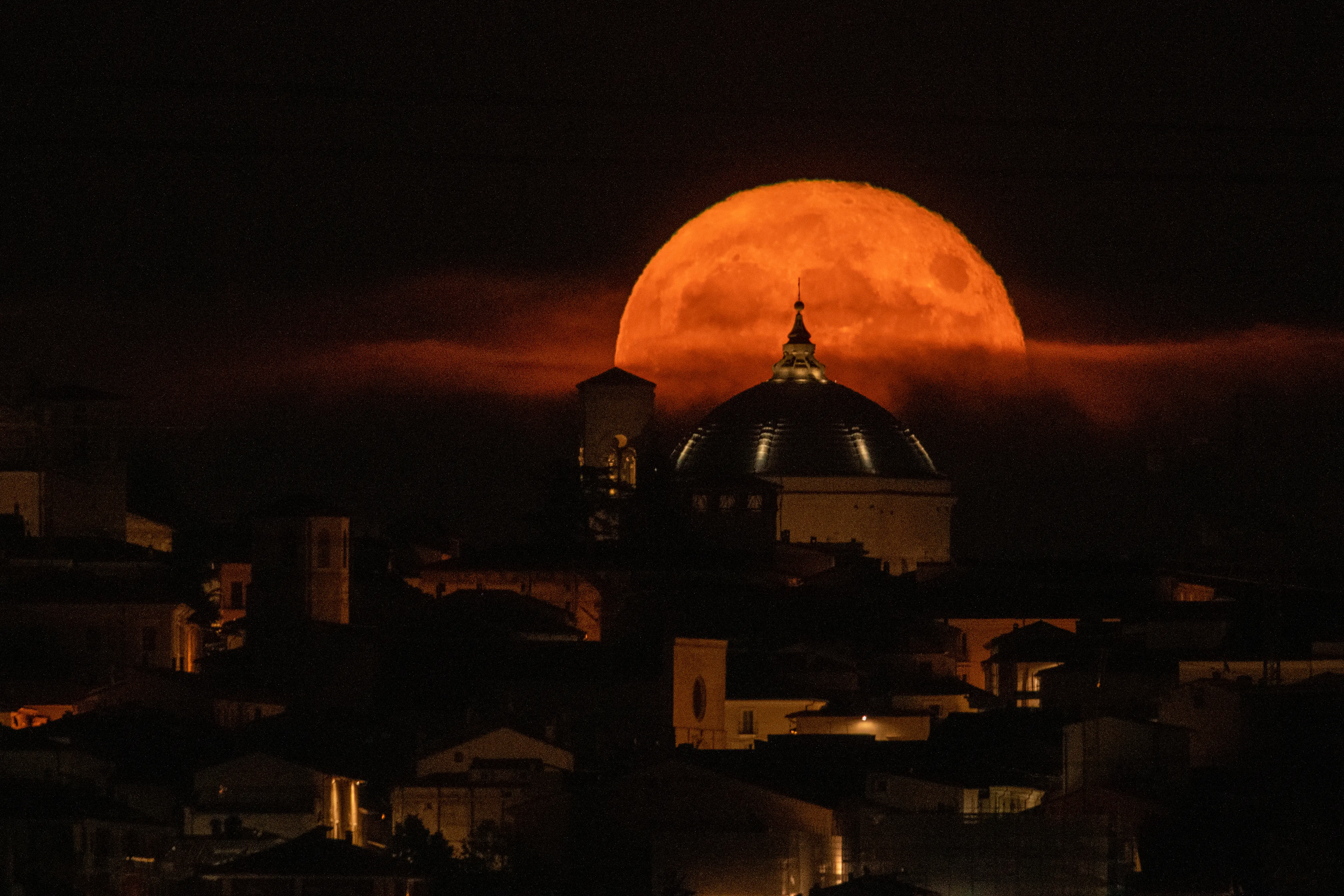When is the next Full Moon and what is the Sturgeon Moon all about? Explained
-
 A sturgeon Super Moon rising behind San Bernardino church dome in L'Aquila (Abruzzo, Italy), on august 12, 2022. August full moon is the last supermoon of 2022. (Photo by Lorenzo Di Cola/NurPhoto via Getty Images)
A sturgeon Super Moon rising behind San Bernardino church dome in L'Aquila (Abruzzo, Italy), on august 12, 2022. August full moon is the last supermoon of 2022. (Photo by Lorenzo Di Cola/NurPhoto via Getty Images)The full moon is one of the most noticeable sights in the night sky. Each month, when the moon reaches its brightest phase, it often carries a special name based on nature, tradition, or history. These names date back hundreds of years and were often used by Native American tribes, farmers, and other communities to track the seasons.
The next full moon is called the Sturgeon Moon, and it will rise in August 2025. In this blog, we will tell you when it will appear, what time you can see it, and why it's called the Sturgeon Moon in the first place.
When will the Sturgeon Moon Rise?
The next full moon will light up the sky on Monday, August 18, 2025. It will reach its fullest point at 2:26 p.m. Eastern Time. Since the moon is not visible during the day in many places, the best time to view it will be after sunset.
Most people will be able to see the full moon rise in the eastern sky on the evening of August 18. It will appear large and bright as it climbs above the horizon. If the weather is clear, you won’t need a telescope to enjoy the view—just step outside and look up.
The moon will also look full the night before and after August 18, so if you miss it one night, you may still catch it the next.
Why is it called the Sturgeon Moon?
The name Sturgeon Moon comes from Native American history and tradition. Tribes living near the Great Lakes and other large bodies of water noticed that sturgeon, a type of large fish, were easier to catch during August.
Because this was the time when sturgeon were most active, the full moon in August was named after them. The name was passed down over many generations and is still used today by people who follow the lunar calendar or enjoy skywatching.
Sturgeon are ancient fish that have been around for millions of years. They can grow very big and are known for their long lifespans. Naming the moon after this fish shows how closely people once lived with nature and its patterns.
What does the Full Moon look like?
When the moon is full, it looks like a perfect glowing circle in the sky. It often appears larger when it's close to the horizon, especially just after rising. This is called the moon illusion—it’s not actually bigger, but our eyes make it seem that way.
Sometimes the full moon also looks more yellow or orange as it rises. This is due to the Earth’s atmosphere and not a change in the moon itself. The colors and size can make the Sturgeon Moon feel extra special.
If you want to take photos of the moon, the best time is just after it rises or before it sets. The light will be softer, and the sky might still have a bit of color.
How can you watch the Sturgeon Moon?
Watching the Sturgeon Moon is easy and free. Here are a few simple tips:
- Go outside shortly after sunset.
- Find a spot with a clear view of the eastern horizon.
- Try to avoid city lights if you want a darker sky.
- Bring a blanket or chair if you want to sit and enjoy the moment.
You don’t need a telescope or special equipment, but if you have binoculars, you can see more details on the moon’s surface. You can also check local weather apps to make sure clouds won’t block your view.
To sum it up, the next full moon—called the Sturgeon Moon—will appear on Monday, August 18, 2025. It’s named after a powerful ancient fish and will shine brightly in the sky that night.
Whether you’re a regular moon-watcher or just curious, this is a great chance to pause, look up, and enjoy one of nature’s most simple and beautiful events.
TOPICS: Full Moon